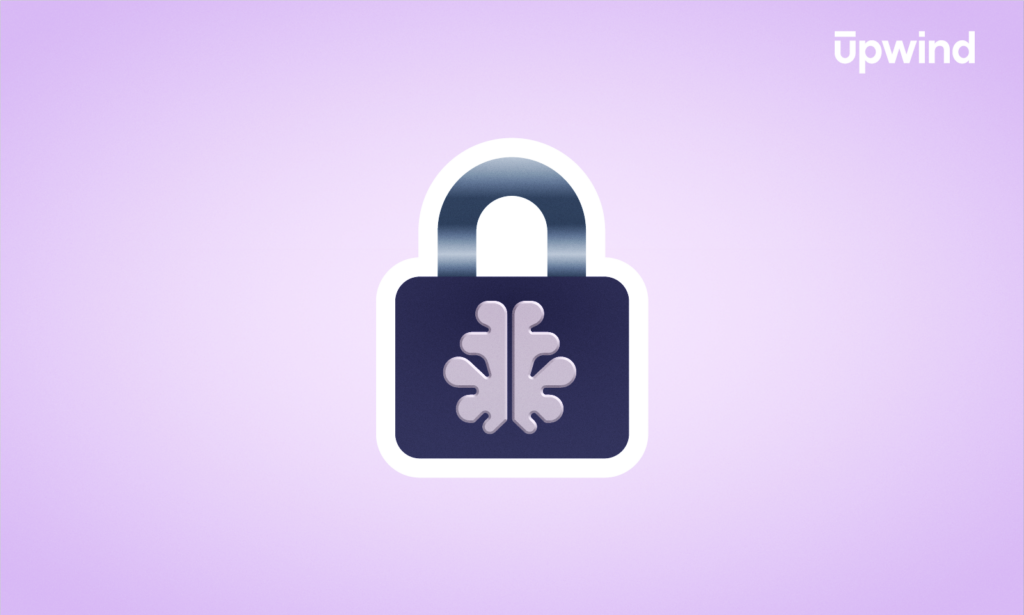
For those in charge of IT infrastructure decisions, the term “hybrid cloud” conjures images of flexibility, agility, and seamless scalability. But for security-conscious organizations, these benefits come with a question: Are you inadvertently creating a security patchwork that leaves gaps between your public and private clouds or on-premises infrastructure?
Picture this: while your public cloud storage hums with automated backups and compliance checks, a misconfigured virtual machine in your private cloud creates an entry point for a sophisticated attacker. It’s the kind of risk that can turn what seems like a secure setup into an open door.
Misconfigurations can happen in either environment. But to secure both, you need a strategy that unifies security across environments. In this article, we will dig into hybrid cloud security and highlight the strategies and tools that help you meet the unique challenges of securing this cloud implementation.
Recap on Hybrid Cloud
The hybrid cloud concept emerged as enterprises sought a middle ground between the cost-efficiency and scalability of public clouds (like AWS or Azure) and the control and extra security of having their own dedicated cloud environment that only they can access.
In a hybrid cloud environment, companies use both public and private clouds or a mix of cloud and on-premises infrastructure. In practice, companies distribute workloads where they make the most sense.
Enterprises can run sensitive applications or store critical data in their private cloud environment while using the public cloud for development and testing, hosting web apps, or low-cost storage for non-sensitive data. Perhaps that’s why, of the 94% of companies worldwide that use cloud computing, 39% pursue a hybrid cloud strategy.
The main tech benefits of a hybrid cloud strategy are:
- Interoperability between the environments, which APIs, virtual private networks (VPNs), or dedicated connectivity solutions like AWS Direct Connect facilitate.
- Scale: Offloading compute-heavy workloads to public cloud resources, allowing companies to scale their capacity as demand increases.
- Orchestration: The ability to deploy, manage, optimize, and automate resources across both environments.
Hybrid cloud use cases include running cloud-native apps, disaster recovery failover, temporarily bursting workloads from private to public clouds during peak demand periods, and segmenting data storage for privacy reasons. Another popular use case is running DevOps environments in the public cloud, where teams can provision resources rapidly to align with the core principles of speed, agility, and automation that DevOps practices strive to achieve without impacting production environments.
Hybrid Cloud Visibility with Upwind
On-prem, public, private, or all three? We’ve got it handled. Upwind gives you comprehensive visibility into your entire hybrid cloud.
What Keeps CISOs Up at Night? Top Hybrid Cloud Security Challenges
Despite operational benefits, CISOs grapple with a range of technical and operational challenges that threaten the security of hybrid cloud environments.
Visibility and Control
Unlike a single-cloud setup, a hybrid architecture spans both private and public clouds, each with its own monitoring tools, APIs, and logging capabilities. This disparity makes it difficult to gain a unified view of what’s happening across the entire environment. Keeping track of resources, services, user activities, and device identities isn’t straightforward.
Without this end-to-end insight into identities and access patterns, attackers can exploit blind spots, such as misconfigured identity federation or service accounts with excessive permissions. Furthermore, any gaps in API logging and monitoring make it harder to detect and respond to unauthorized access or anomalous behavior, such as a compromised device accessing critical services. The challenge lies in deploying tools that can unify this visibility and provide real-time insights across all components, reducing the time to detect and address potential threats.
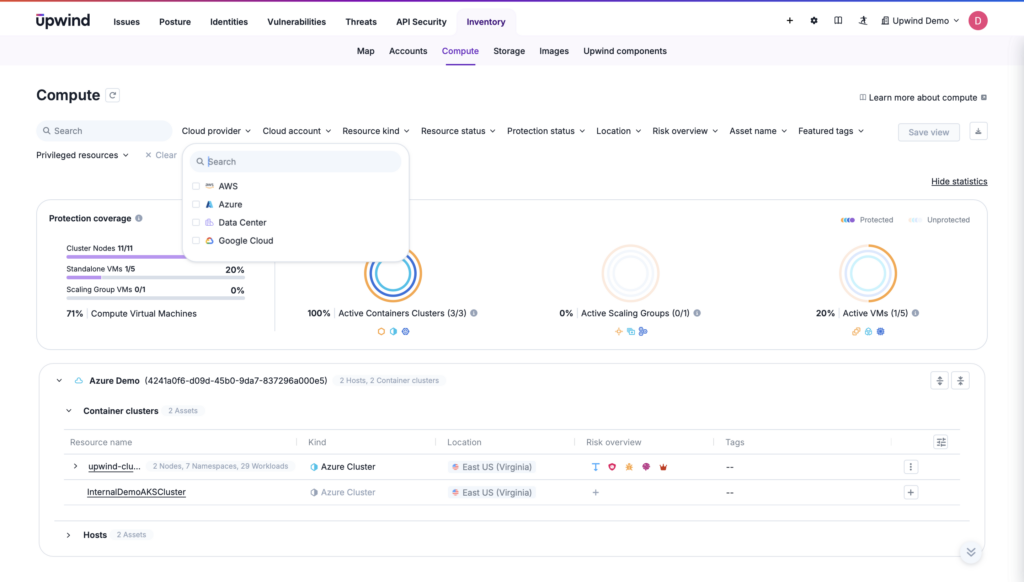
An Increasingly Sophisticated Threat Landscape
Hybrid clouds have a broad attack surface, making them a prime target for bad actors who exploit the integration between public and private components. For example, a misconfigured API in a public cloud can become an entry point for attackers, allowing them to pivot into the private cloud environment.
Ransomware groups have become especially adept at exploiting weak links, and they often target backups stored in private clouds after initially breaching public cloud services. The sophistication of these attackers demands advanced threat intelligence and detection capabilities that span both environments.
Real-world Examples of Breaches in Hybrid Cloud Environments
Fortinet 2024
Fortinet suffered a 440-gigabyte leak of customer data in its cloud environment in 2024. The incident stemmed from an open Amazon S3 bucket, which the hackers stole and offered for download on the dark web via Azure SharePoint files.
GoTo 2022
In 2022, remote access and collaboration company GoTo suffered a breach of its cloud environment. The company noticed that hackers had not only accessed development environments but also a third-party data storage service. Subsequent investigations found that the threat actor exfiltrated encrypted backups from the cloud storage service, as well as an encryption key to unscramble the encrypted data.
Practical Strategies to Strengthen Hybrid Cloud Security
Monitor Cloud & On Prem Network Topology
Similar to cloud-native security, effective hybrid-cloud security requires continuous visibility into network topology and resource behavior. While this can be done by rigorous logging and monitoring, many security solutions today offer real-time visibility into network topology through the use of an agent or sensor.
For example, eBPF sensors offer a safe and lightweight alternative to traditional agents, monitoring system calls on Layer 3, Layer 4, and Layer 7 and providing real-time visibility into network topology both in on-premises and cloud-native infrastructure.
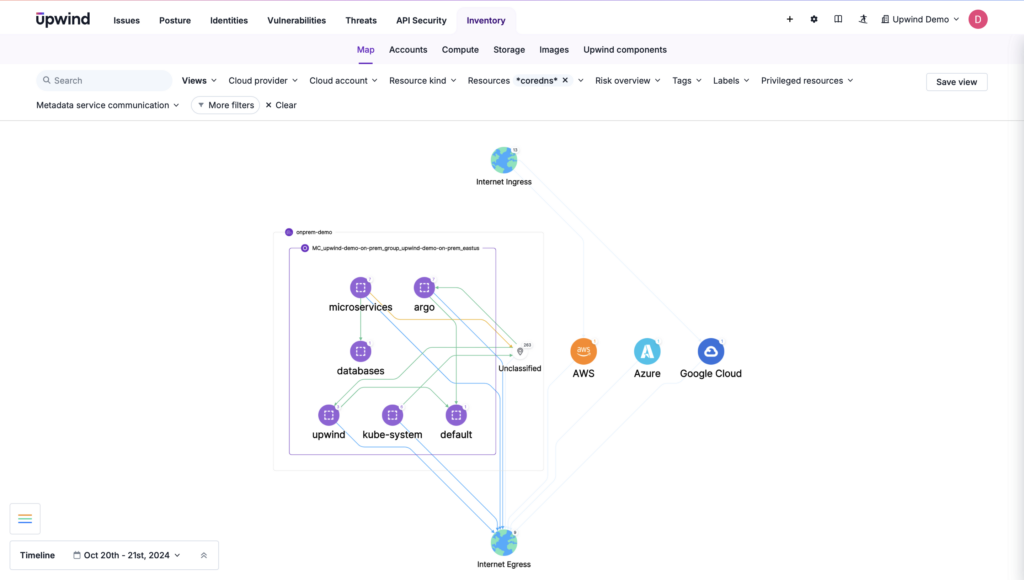
Centralize Sensitive Data Management
While organizations should follow data best practices such as data encryption, they should also implement a centralized data management strategy that encompasses data in on-premises environments as well as in the cloud.
Numerous security tools provide the ability to tag, monitor, and track sensitive data in hybrid-cloud environments, providing additional visibility into potential data risks and helping organizations to proactively secure resources with sensitive data.
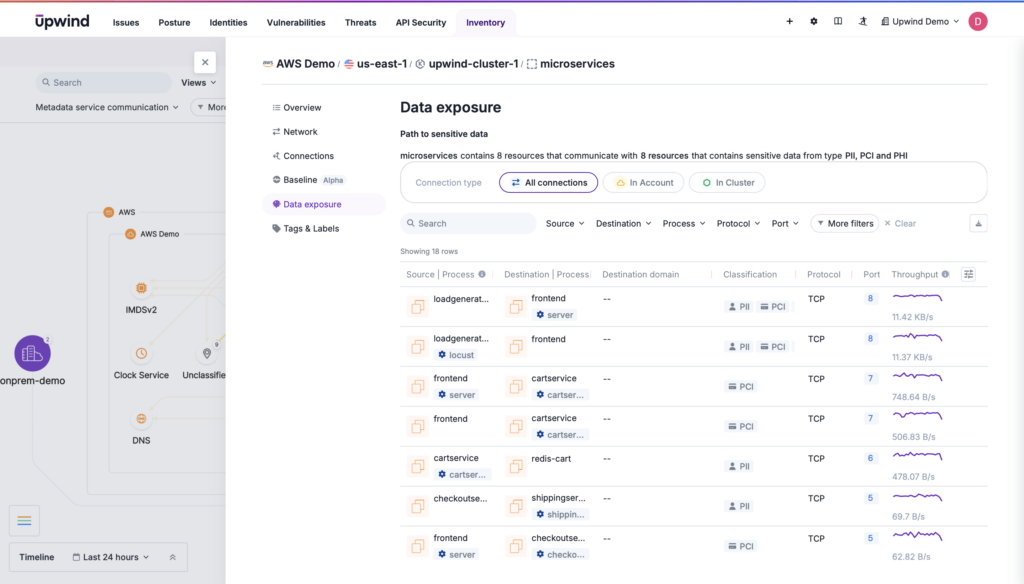
Unify Attack Surface Reduction Efforts
Organizations should also consider a unified strategy for attack surface reduction in hybrid-cloud environments, including unified vulnerability management, posture security, data security, and threat detection and response efforts.
In order to establish unified attack surface reduction efforts, you should implement tools that support hybrid-cloud environments rather than siloing security efforts with tools that serve only on-premises or only cloud-native infrastructures. To streamline attack surface reduction efforts, you should also holistically monitor hybrid-cloud environments and prioritize risk findings based on their potential security impact.
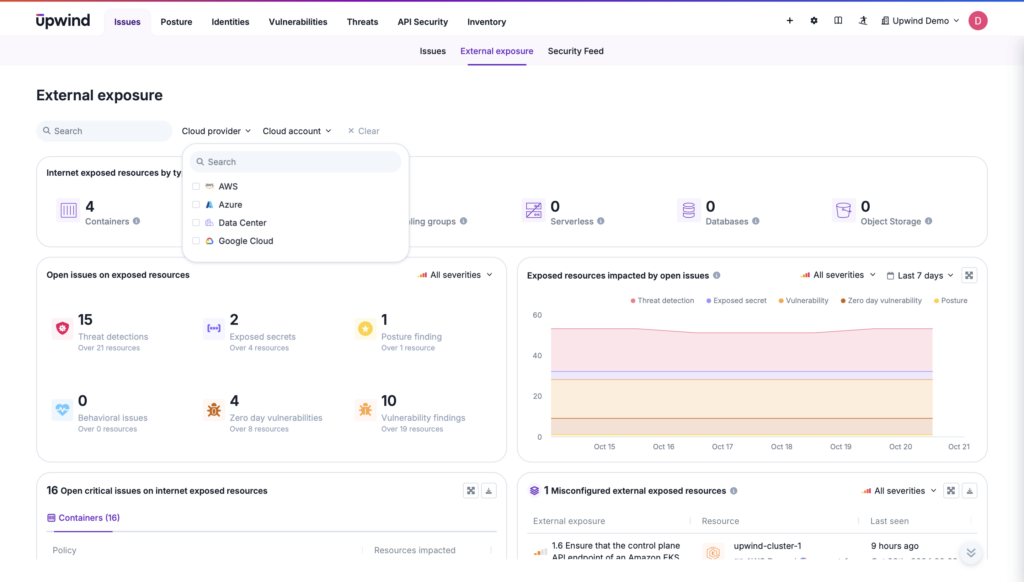
Prioritize Risk Management
Prioritized hybrid-cloud risk management requires runtime insights, which help you rapidly identify the most critical risks to your production environments.
By prioritizing risk findings, organizations can decrease the mean time to remediation and rapidly fix risks that could have the greatest impact on their hybrid-cloud infrastructure.
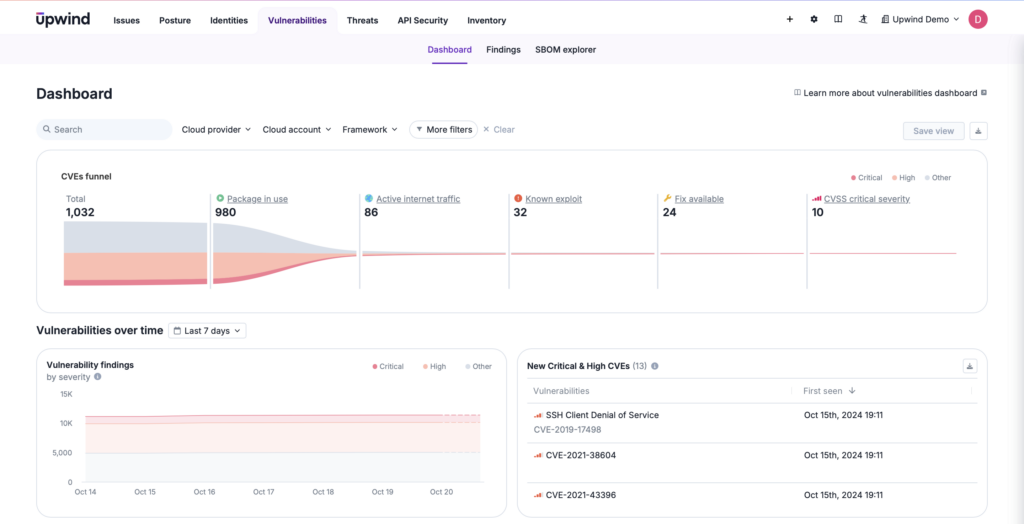
Implement Shift Left & Shift Right Best Practices
Shift left on security testing by using tools that help identify vulnerabilities and misconfigurations in cloud-native apps as early as the code and build stages. This approach ensures that you conduct timely security checks across both private and public cloud environments, reducing risks before deployment.
In addition to shifting left, don’t forget to examine and prioritize security on the right. Use runtime security tools that monitor and enforce security policies on containerized applications running across your hybrid cloud environment. This ensures that if a container behaves unexpectedly, you know about it immediately. In general, look towards cloud-native tools that are purpose-built to help secure containers, microservices, and serverless functions.
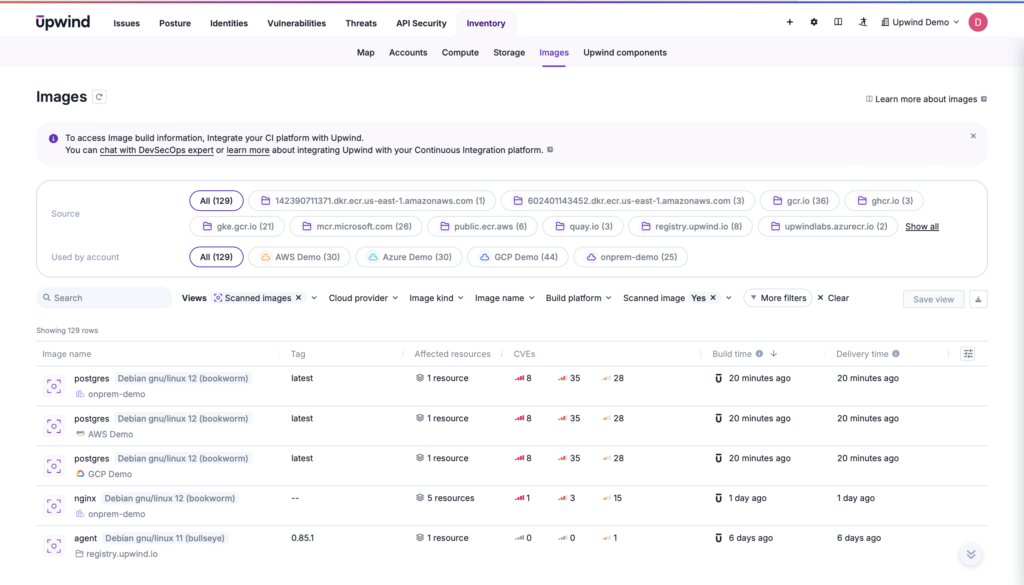
Essential Tools for Securing Hybrid-Cloud Infrastructure
Below is a brief overview of some essential tools to consider for bolstering hybrid cloud security:
- Cloud Security Posture Management (CSPM) — CSPM tools provide visibility into misconfigurations and compliance risks across both public and private cloud environments. They help ensure consistency in security settings across your hybrid cloud environments.
- Identity and Access Management (IAM) Tools — IAM solutions manage user access, enforce multi-factor authentication (MFA), and create granular access policies for your cloud resources. They enable centralized management of user identities across public and private clouds, ensuring that users and services have appropriate access to resources.
- Web Application Firewalls (WAF) — These tools protect your applications from common web-based attacks, such as SQL injection, cross-site scripting (XSS), and API abuse.
- Network Security Tools — Look for tools to create secure tunnels between private and public cloud resources and secure any data transfers. Network segmentation tools prevent lateral movement between services in different environments, protecting the most sensitive segments of your hybrid cloud.
- Data Loss Prevention (DLP) — DLP tools monitor and control data flow to prevent unauthorized sharing, access, or exfiltration of sensitive information. They can enforce policies for sensitive data handling and prevent accidental or intentional data leakage between environments.
- Cloud-Native Application Protection Platforms (CNAPP) — By encompassing workload protection, identity management, and visibility, CNAPP gives security teams a unified toolset for monitoring and managing security across microservices, containers, and serverless architectures.
Benefits of CNAPP for Hybrid Cloud Security
Given that running cloud-native apps is one of the most appealing use cases for hybrid-cloud environments, a CNAPP is uniquely positioned to bolster your hybrid cloud security holistically. These platforms integrate advanced security capabilities tailored to the complexities of hybrid cloud architectures, including the benefits listed below.
Runtime Protection
CNAPPs that leverage runtime give you continuous protection for your hybrid cloud infrastructure. By actively monitoring infrastructure and application behavior in real time, you can swiftly detect and respond to anomalies and potential threats as they arise.
For example, a CNAPP helps ensure container images comply with predefined security baselines and prevent unauthorized runtime behavior. This immediate feedback allows your security teams to address malicious activities as they occur.
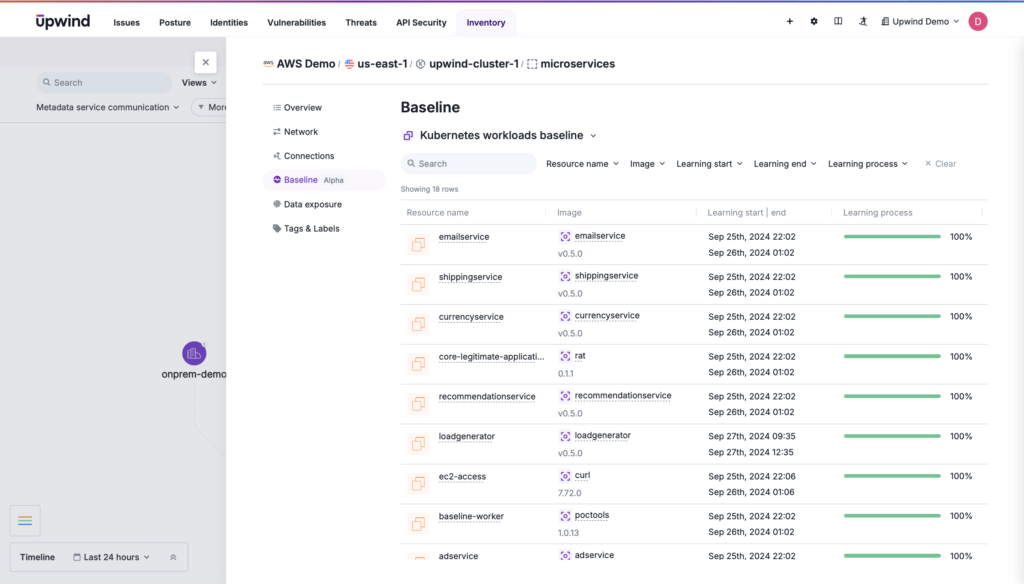
Comprehensive Visibility
CNAPPs provide a holistic view of cloud-native applications across hybrid-cloud environments. These tools help you monitor for threats, detect vulnerabilities, and enforce security policies consistently in public and private clouds.
CNAPPs continuously monitor your hybrid cloud environments to discover their inventory and assets, including workloads, containers, and services. This ongoing discovery provides continuous visibility with an up-to-date inventory of your infrastructure and applications.
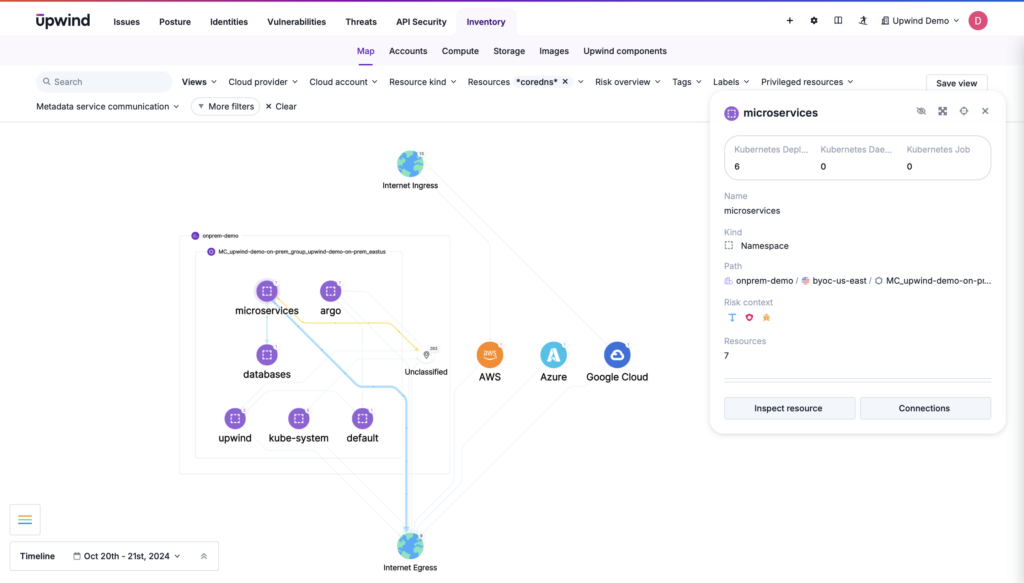
Secure Your Hybrid Cloud Environment with Upwind
Hybrid-cloud infrastructure is indispensable for organizations that want flexibility and scalability with the benefits of keeping some data and workloads private. However, hybrid-cloud environments come with their own security risks. For comprehensive visibility, consistent configuration across all types of clouds, and runtime protection, you’ll need to unify your cloud security tools.
Upwind is a comprehensive CNAPP that protects your hybrid-cloud infrastructure in real time. Schedule a demo today.
FAQ
How does the hybrid cloud impact IAM strategies?
Strategies require more complexity as organizations contend with the differing IAM systems of each cloud service provider, leading to siloed identities. Key impacts include:
- Federated identity
- Access control models
- Granular permissions
- Zero trust
- Privileged access management
- Multi-factor authentication
- Compliance
These challenges demand flexible, integrated IAM solutions for consistent control and visibility across the hybrid cloud landscape.
What are the compliance risks of a hybrid cloud environment?
Inconsistent security controls are a primary risk of hybrid cloud environments, where the same data might be managed across services. Some risks to consider are:
- Data sovereignty and residency
- Data privacy
- Auditability
- Third-party risks
- Configuration drift
- Disaster recovery and data retention
Managing compliance in a hybrid cloud environment requires a unified approach to security, data governance, and regulatory adherence across platforms.
Are there specific considerations for containerized workloads in hybrid cloud environments?
As with data privacy or compliance, the primary security issue for containerized workloads in a hybrid environment is maintaining consistency across environments. Inconsistent policies can lead to vulnerabilities in some environments that aren’t an issue in others.
Organizations must not only ensure consistent security. They must also secure container orchestration tools, enforce network segmentation, and manage data protection and compliance. Image management, runtime monitoring, and governance controls are all part of helping containers run securely no matter where that is.

